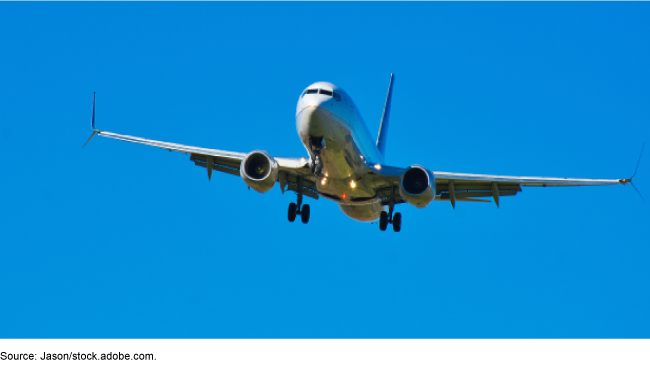Aircraft Certification: Comparison of U.S. and European Processes for Approving New Designs of Commercial Transport Airplanes
Fast Facts
Two deadly accidents involving FAA-certified Boeing 737 MAX aircraft raised concerns about FAA's oversight of airplane manufacturers.
We compared how FAA and the European Union Aviation Safety Agency (EASA) certify new aircraft designs. Among other things, we found:
- Both rely on manufacturers to support the certification process, such as involving manufacturers in determining whether components comply with design standards
- EASA reviews elements of manufacturer certifications that FAA does not
- FAA is evaluating whether to make some changes to its certification process, such as expanding its use of technical advisory boards

Highlights
What GAO Found
GAO's comparative analysis found that activities and standards for certifying new designs of commercial transport airplanes are largely similar in the U.S. and Europe. The similarities stem from a U.S.-European Union (EU) 2008 bilateral agreement that helped harmonize their processes and allows the Federal Aviation Administration (FAA) and the European Union Aviation Safety Agency (EASA) to streamline verification of each other's safety certification approvals. While FAA and EASA continue to work toward greater harmonization, FAA is evaluating changes to its certification process to address investigative findings and legislative changes following the grounding of the Boeing 737 MAX. These efforts are expected to change how FAA carries out some certification activities, such as expanding use of technical advisory boards in assessing new designs.
Examples of Boeing and Airbus Commercial Transport Airplanes

Both FAA and EASA rely on manufacturers to support the design certification process, but their approaches to involving manufacturers and reviewing their work differ. For example, both authorities involve manufacturers in determining whether aircraft systems and components comply with design standards. FAA and EASA said they require manufacturers' employees that work on compliance determinations and findings to carry out their duties independently and free from undue pressure. Prior to approving an aircraft design, both FAA and EASA review manufacturers' certification packages. FAA reviews the completeness of the overall certification packages and compliance determinations involving high risk areas, but this review does not customarily include an independent review of the technical basis for compliance determinations. In contrast, EASA officials said they use a risk-based approach for evaluating compliance findings as part of their review of the final certification package based on agreements made with the manufacturer earlier in the certification process. As part of this review, EASA engineers evaluate the technical basis of the compliance findings.
FAA and EASA oversee manufacturers' certification activities by reviewing internal audit results and conducting their own audits, but the scope of their oversight differs. FAA's oversight pertains to the manufacturer's certification compliance activities and does not include airplane design information. However, EASA officials said that they oversee the manufacturer's certification compliance activities and all aspects involved in designing the airplane.
Why GAO Did This Study
FAA and EASA certify the safety of new commercial airplane designs for use in the U.S. and Europe, respectively. Two deadly accidents involving the FAA-certified Boeing 737 MAX raised concerns about FAA's certification and oversight processes of airplane manufacturers.
The explanatory statement accompanying the Further Consolidated Appropriations Act, 2020, included a provision for GAO to compare FAA's and EASA's oversight regimes for airplane certification. This report examines, among other things, the similarities and differences between FAA's and EASA's (1) activities and standards for certifying new designs of commercial transport airplanes, (2) approaches for manufacturer involvement in the design certification process, and (3) audits of manufacturers' design certification process activities.
GAO reviewed applicable U.S. and EU laws, FAA and EASA documentation, and international agreements related to certification. GAO interviewed FAA officials and received written responses from EASA officials. GAO also interviewed representatives from Boeing, Airbus, two other aviation authorities, and an aviation association to better understand the two processes. The information about foreign law in this report is not the product of our analysis but is derived from interviews and information provided by EASA.
For more information, contact Heather Krause at (202) 512-2834 or krauseh@gao.gov.
